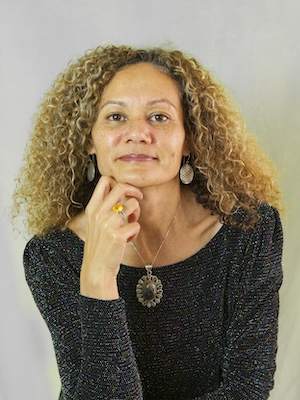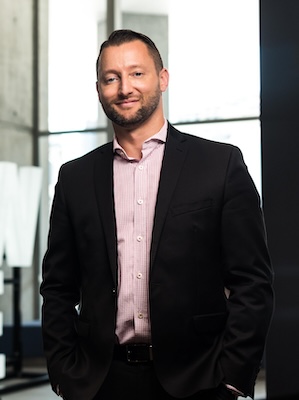Three members of AHRI’s Diversity, Equity & Inclusion Advisory Panel offer advice on navigating the current DEI landscape and laying the foundations for sustainable progress.
The last few years have seen diversity, equity and inclusion (DEI) climb to new heights on HR’s list of priorities. Recent research indicates that HR professionals are more attuned to the importance of DEI to organisational success than ever before.
According to AHRI’s The State of Diversity, Equity, and Inclusion in Australian Workplaces 2023, the vast majority (84 per cent) of HR professionals say DEI is critical to the future success of their organisation. This increased focus on DEI has been significantly influenced by social movements, heightened expectations from employees and stakeholders and greater engagement in DEI conversations.
However, the research also reveals a clear gap between intent and execution. Just 50 per cent of HR professionals say their leaders see DEI as a priority for their organisation, and a similar proportion (49 per cent) say their organisation is not placing enough focus on DEI.
To help HR narrow this gap and drive sustainable progress, AHRI’s DEI Advisory Panel has created a paper to guide organisations, DEI specialists and HR professionals in fostering more inclusive work environments.
Below, three members of the panel offer their insights on ways that HR professionals can respond to some of the most pressing DEI challenges facing Australian organisations.
 Invest in DEI leadership
Invest in DEI leadership
By Barbara Sheehy MAHRI, National Indigenous Manager, Australia Post
We know when organisations engage in diversity, equity and inclusion strategic practices, the return on investment in enabling diverse thinking and collective voice is impactful. However, these benefits are not linear.
A deliberate lens to invest in leadership capability and diversity appointment, in my view, is the advancement that corporate Australia, industry and government should seek to demonstrate when navigating the DEI landscape.
The AHRI DEI Futures Paper provides HR practitioners and members with valuable insights and evidence-based examples to shift workplace culture from participation towards a maturing capacity through the AHRI Diversity and Inclusion Maturity Model.
This inclusion framework identifies three key levels of maturity: compliance, changing mindsets and embedding DEI into an organisation’s DNA. This transformative roadmap distinguishes and measures an organisation’s commitment to creating thriving workplace cultures of belonging and impactful, sustainable change.
Another benefit to understanding and embedding the Diversity and Inclusion Maturity Model is that it can be adapted across organisations, regardless of industry, size or complexity. Each organisation’s adoption will be bespoke, however, the learnings, investment and sustainable impact will positively contribute to the ever-challenging yet rewarding landscape of Australia’s DEI conversations.
Read HRM’s article on the importance of intersectional leadership here.
 How can HR leverage lived experiences in a respectful and effective way to inform their DEI frameworks?
How can HR leverage lived experiences in a respectful and effective way to inform their DEI frameworks?
By Mathew Paine FCPHR, Executive General Manager, People & Culture, Australian Financial Complaints Authority
It’s important that HR can effectively leverage lived experiences to inform their DEI frameworks to ensure they suit a broad range of employees and actually deliver on their needs.
HR can do this by implementing strategies such as:
- Organising listening sessions (for example, inviting marginalised groups to speak at leadership team meetings about their lived experience).
- Sponsoring and funding employee resource groups.
- Collecting feedback through surveys.
- Providing inclusive training.
- Collaborating with external organisations.
- Conducting regular inclusive policy reviews to ensure fairness and equity.
- Encouraging leadership engagement and attendance to D&I events.
- Consulting and gathering feedback on HR initiatives from specific employee cohorts.
- Establishing accountability measures.
By integrating real-life experiences into these initiatives, HR can gain valuable insights to develop comprehensive DEI frameworks that address systemic barriers, promote inclusivity and foster a culture of belonging.
 Collecting diversity data
Collecting diversity data
By Roman Ružbacký MAHRI, Principal Diversity, Equity and Inclusion Consultant, Roman Ruzbacky & Associates
Diversity data literacy is becoming an essential skill for HR and DEI professionals – including ensuring Human Resources Information Systems house fully inclusive data sets, and skilled personnel can critically interpret their data, provide insights and develop evidence-based approaches and actions that can be measured.
It’s important to have clear success metrics in place so you actually understand what action has resulted in moving the dial, whether it’s representative target, or a percentage agreement rate for inclusion in the organisation, or knowing who feels included.
The correlation between data sets is critical to understand the full impact of data. For example, how gender pay gaps are connected to representation, job segregation, recruitment and promotion. Intersectional analysis can also provide a more granular analysis and insights into the employee experience.
In order to translate these insights into action, HR professionals must hone their ability to find the human stories behind their data sets. Finding strong headline data which is irrefutable can help connect with leaders and inspire greater commitment to DEI.
For example, the number of women who have experienced violence by an intimate partner, the 53 per cent workforce participation rate of people with disability, or the gender pay gap; these are figures you can’t dispute. And they’re the kind of figures that should be prompting people into action.
Check out AHRI’s full Diversity, Equity and Inclusion Futures Paper for more valuable insights on navigating Australia’s DEI landscape and driving sustainable change.


This is great Phoebe and thanks to Mat, Barb and Roman for their insight. I’m hoping the DEI paper is as strong now as it was when we first launched it earlier this year: touching on contemporary issues and exploring how to support them in today’s workplace.